Define Our Future
08 March 2024
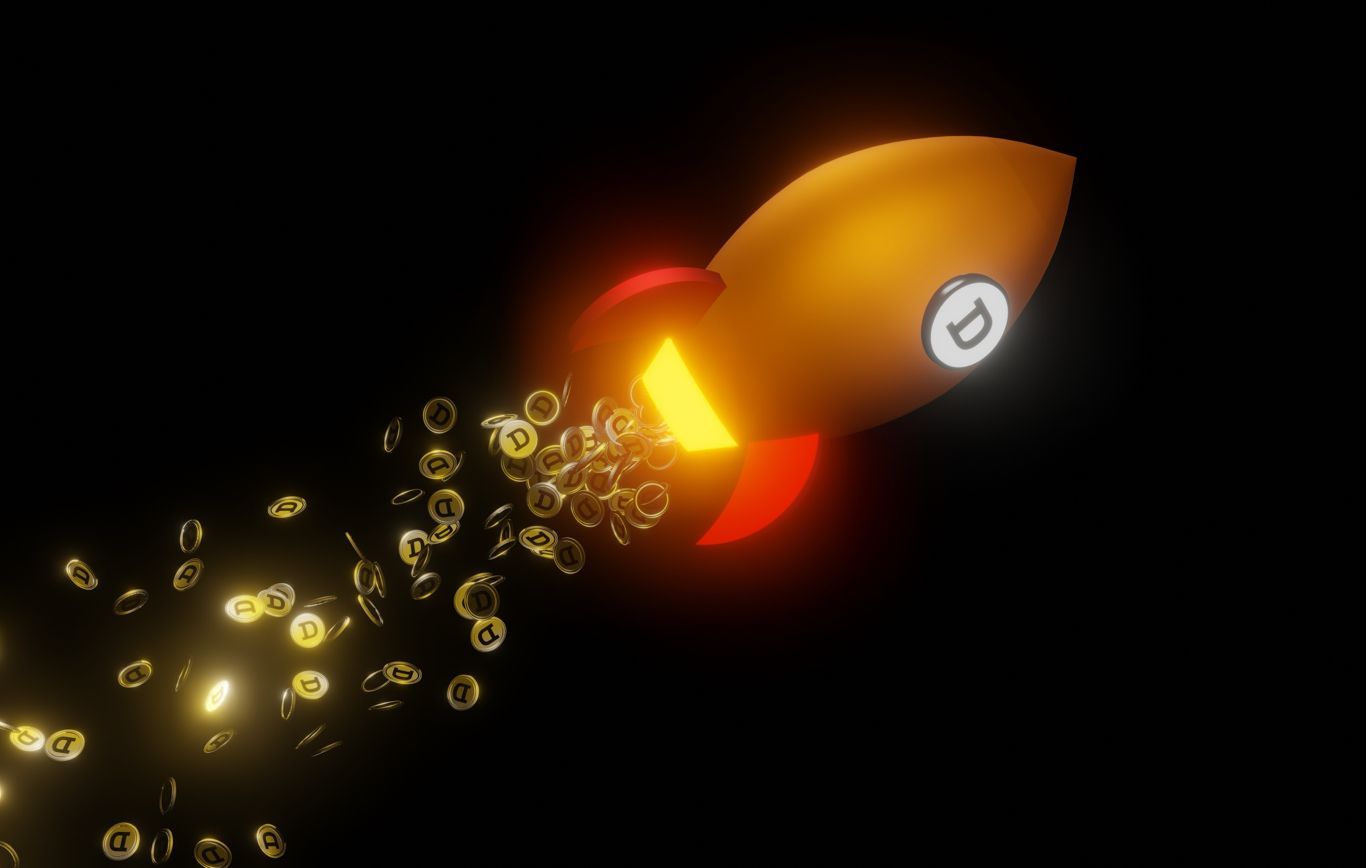
(Adobe)
There has been much excitement over the rally of popular cryptocurrency, Dogecoin (DOGE). The value has not only soared, but also seemingly sustained, currently holding a value of $0.15 per coin, compared to $0.07 one month ago, representing a rise of roughly 105%. Some analysts now predict that an eventual rise to $1 wouldn’t be surprising.
Speculation over the retail adoption of DOGE could be one of the key drivers, with Ferrari becoming one of the latest major brands to accept the coin as payment, while DOGE is the only cryptocurrency that Tesla accepts as payment. Furthermore, rumours continue to gather surrounding the possibility of it also being somehow incorporated into X.com. Elon Musk is a keen supporter of Dogecoin and back in April he temporarily changed the social media platform’s logo to the Shiba Inu dog image associated with the currency.
While Musk gave no explanation for this, nor has he confirmed in any way that DOGE will be incorporated into X.com, more excitement came last month, surrounding news of the DOGE-1 lunar mission, which consists of a lunar satellite due to be launched with SpaceX. The CubeSat mission, being developed by Geometric Energy Corporation was announced in 2021, and its purpose is to collect "lunar-spatial intelligence" using onboard sensors and a camera, while also displaying display images and digital art on a small screen on the lunar orbiter that will be broadcast back to Earth.
The mission has been entirely funded using Dogecoin and furthermore, SpaceX recently accepted DOGE as a means of payment for a rescheduling the launch of the mission. These all amount to increasing speculation about the role of Dogecoin as a future interplanetary currency. Crypto News said that “the successful transaction using Dogecoin to fund a mission of this magnitude is a milestone” and that it “cements the cryptocurrency’s position as a viable unit of account for lunar and possibly interplanetary business dealings.”
In addition, Tom Ochinero, VP of Commercial Sales for SpaceX, previously said that "this mission (DOGE-1) will demonstrate the application of cryptocurrency beyond Earth orbit and set the foundation for interplanetary commerce.”
Blockchain as the basis for a decentralised space economy?
Blockchain is already being used in the industry, through companies such as Blockstream, Cryptosat and Spacechain. Furthermore, NASA announced last year that they will use Blockchain technology to prove future crewed landings on the Moon, using “data cubes”. The transparent nature of Blockchain has also been touted as beneficial as the basis for a decentralised space economy, as it fosters trust among stakeholders.
Also, using blockchain and cryptocurrencies to build a decentralised finical system could be beneficial in relation to future asteroid mining and off-world resource extraction. Retrieving large quantities of valuable minerals from other celestial bodies could cause the value of these resources to plummet, and therefore have a detrimental effect on those global economies that base their value upon them. It has been suggested that a decentralised system based on Blockchain could therefore theoretically prevent that.
It still remains unclear what the short and long-term applications could truly be, and Elon Musk remains somewhat cryptic on the matter. However, with the advent of missions such as DOGE-1, we may be witnessing the birth of a new application for currencies, such as Dogecoin, for space. The CubeSat mission could be one of the curtain-raising moments for this, and while it was delayed from its scheduled launch last month with Intuitive Machines (IM-1), we could still see it launched possibly with their second mission later this year.
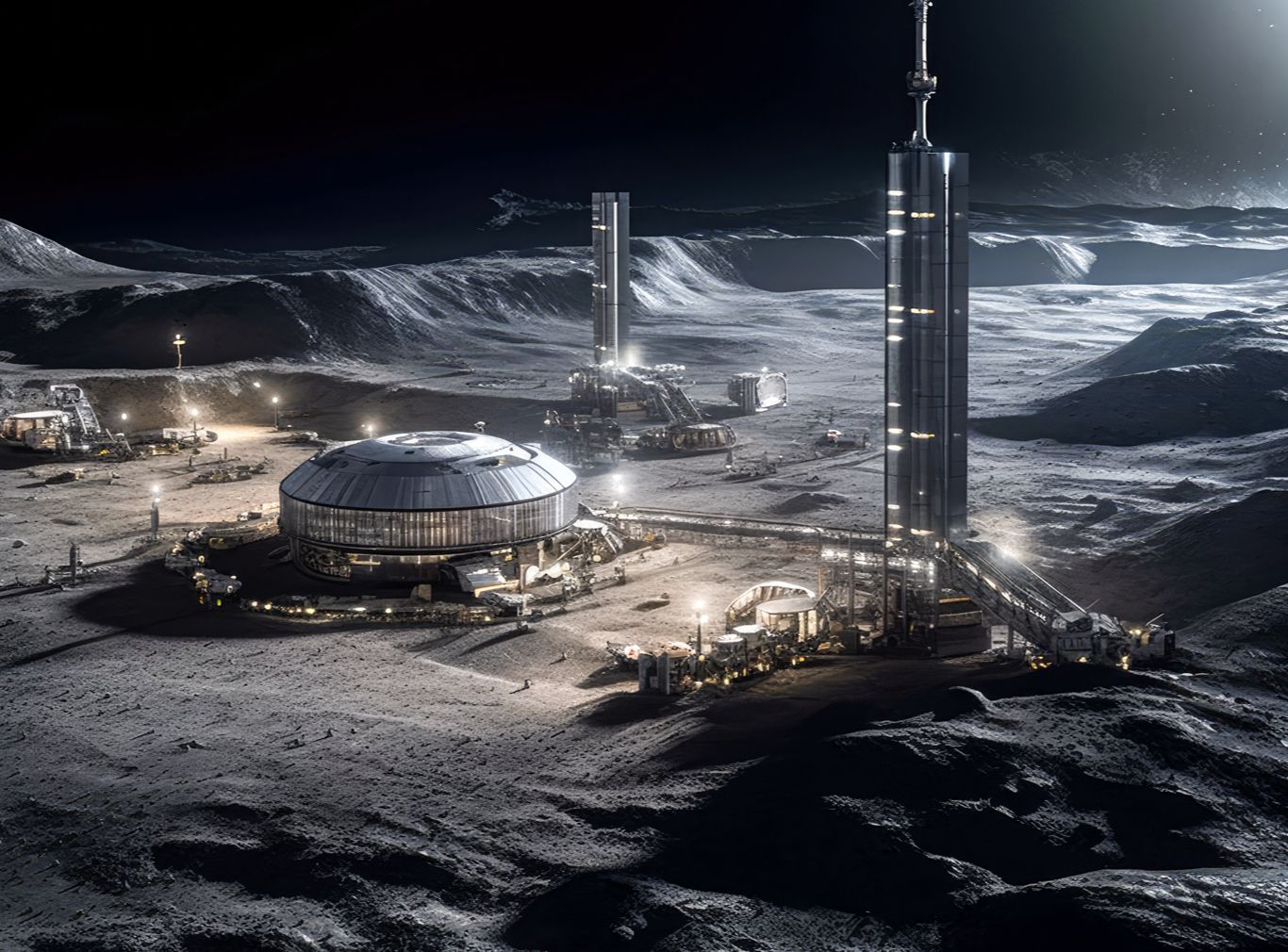
(Adobe)
Russia plan for lunar nuclear power, China to build surveillance on the moon
In the wake of growing national and commercial lunar ambitions, Russia have this week expanded on their future plans for the growing lunar economy. Through the Chinese-led International Lunar research Station (ILRS) project, Roscosmos head, Yuri Borisov, said that Russia will add its expertise and provide a nuclear power plant on the Moon by 2035.
Power solutions such as nuclear hold a clear and distinct advantage over solar power, in being able to seamlessly provide energy throughout the long lunar night. Rolls Royce also recently announced plans to develop a mini nuclear reactor which could be used on the Moon, a project which received UK Space Agency funding.
Speaking at the Moscow State Technical University, Borisov also announced renewed efforts in the space industry for Russia, which has been suffering due to the effect sanctions and loss of international partners. They are now aiming for over 40 space missions this year, increased from 19 in 2023. Borisov is also tasked with drastically increasing Russia’s satellite manufacturing capacity from 40 to 250 annually.
Russia is still a leading space nation with a fine industrial heritage. However, they are now under mounting pressure to build and maintain their leadership, in the wake of geopolitical pressures and rising competition from emerging space powers such as India.
China build on lunar ambitions and launch capacity
China is also building on its launch capacity with plans for the development of reusable launch vehicles. Reusability is already being tested with commercial startups such as Galactic Energy and Landspace.
However, China’s main state contractor, China Aerospace Science and Technology Corporation (CASC), is exploring plans for reusability, with both a four and five metre-diameter rocket slated for launch in 2025 and 2026, respectively. Although the details surrounding the two vehicles aren’t yet clear, CASC is known to be developing a new five metre-diameter Long March 10 rocket, capable of launching crew to orbit, with a three-core version able to carry a crew vehicle to lunar orbit.
China has clear ambitions regarding lunar exploration, with their Chang’e-6 lander mission due to launch in May this year, building towards towards plans for a permanent lunar base and a crewed landing by 2030.
They have also this week detailed plans to construct a permanent camera surveillance network, which would enable a seamless view off their lunar research station area. According to a paper published by the Lunar Exploration and Space Engineering Centre of the China National Space Administration (CNSA), they would be able to draw on experience from their domestic surveillance network, named project Skynet, which mobilises the use of 600 million cameras in the country.
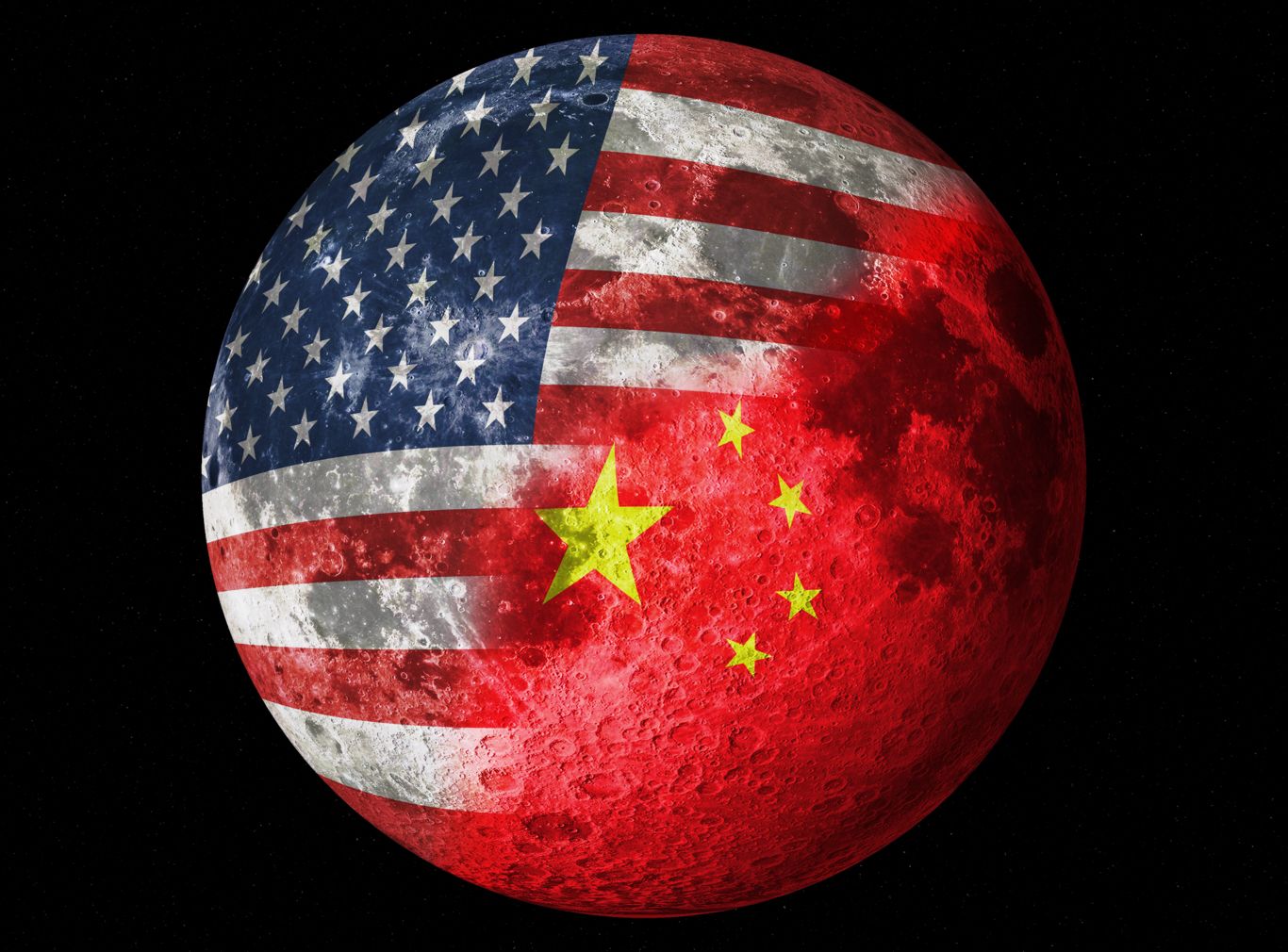
(Adobe)
China outline position on space resource extraction to UN
In what became an eventful week regarding development of lunar infrastructure, China also outlined its position on the use and extraction of off-world resources, such as on the Moon.
The US have made their position on this somewhat clear already, through the regulatory framework, the Artemis Accords. This permits lunar mining while also maintaining that it is based on the principles of the UN Outer Space Treaty (OST).
A document was submitted by China to the Working Group on Legal Aspects of Space Resource Activities of the Legal Subcommittee of the Committee on the Peaceful Uses of Outer Space (COPUOS), within which it states that China believes that “the exploration, exploitation and utilisation of space resources shall be in conformity with the principle of non-appropriation.” Article II of the OST forbids the appropriation of territory, and so it seems that China are also willing to comply with the UN law, while also permitting resource utilisation, much in the way the Artemis Accords does.
The move by China is also encouraging in that it shows their willingness to approach the UN and use it as a meeting place to discuss these pressing matters. Meanwhile, in adopting a similar stance to the US, it would seem that there is some possibility of establishing a form of universal regulatory alignment.
China proposal not completely in alignment with US approach
However, while this move has been seen as encouraging, it still does not address some fundamental problems. While both approaches claim to be based upon the principles of UN space law, the OST itself does not actually set clear rules regarding resource extraction, nor is it suitable to govern for the commercial age, being written in 1967. This would still make it much more difficult to establish any kind of sustainable legal transparency or resolve disputes.
Furthermore, even if the US and China could establish regularity alignment on resource utilisation, it still doesn’t necessarily prevent the growth of a new race mentality, which has been gaining significant momentum in the previous year. For example, a US subcommittee of the House Natural Resources Committee discussed the topic of lunar mining in December, with Michelle Hanlon, executive director of the University of Mississippi, arguing for the use of “exclusion zones” (a safety zone marked around the area around a landed vehicle) in order to secure resource-rich areas.
The Chinese paper also addresses concerns about commercial activity interrupting any scientific exploration, stating that “the Working Group should consider…any potential negative impact of those concerning commercial space resource activities on such activities with a scientific investigation purpose.”
It also proposes taking measures to “prevent depletive exploitation of space resources”, something which could possibly occur through increased commercial activity and competition. This doesn’t necessarily align with the US-led approach, with the Artemis Accords encouraging commercial partnerships as a catalyst for economic growth.
This proves that issues do remain, and a truly universal regulatory handbook does not yet exist, but at least China’s move may at least suggest that dialogue can be opened-up.
Define Our Future
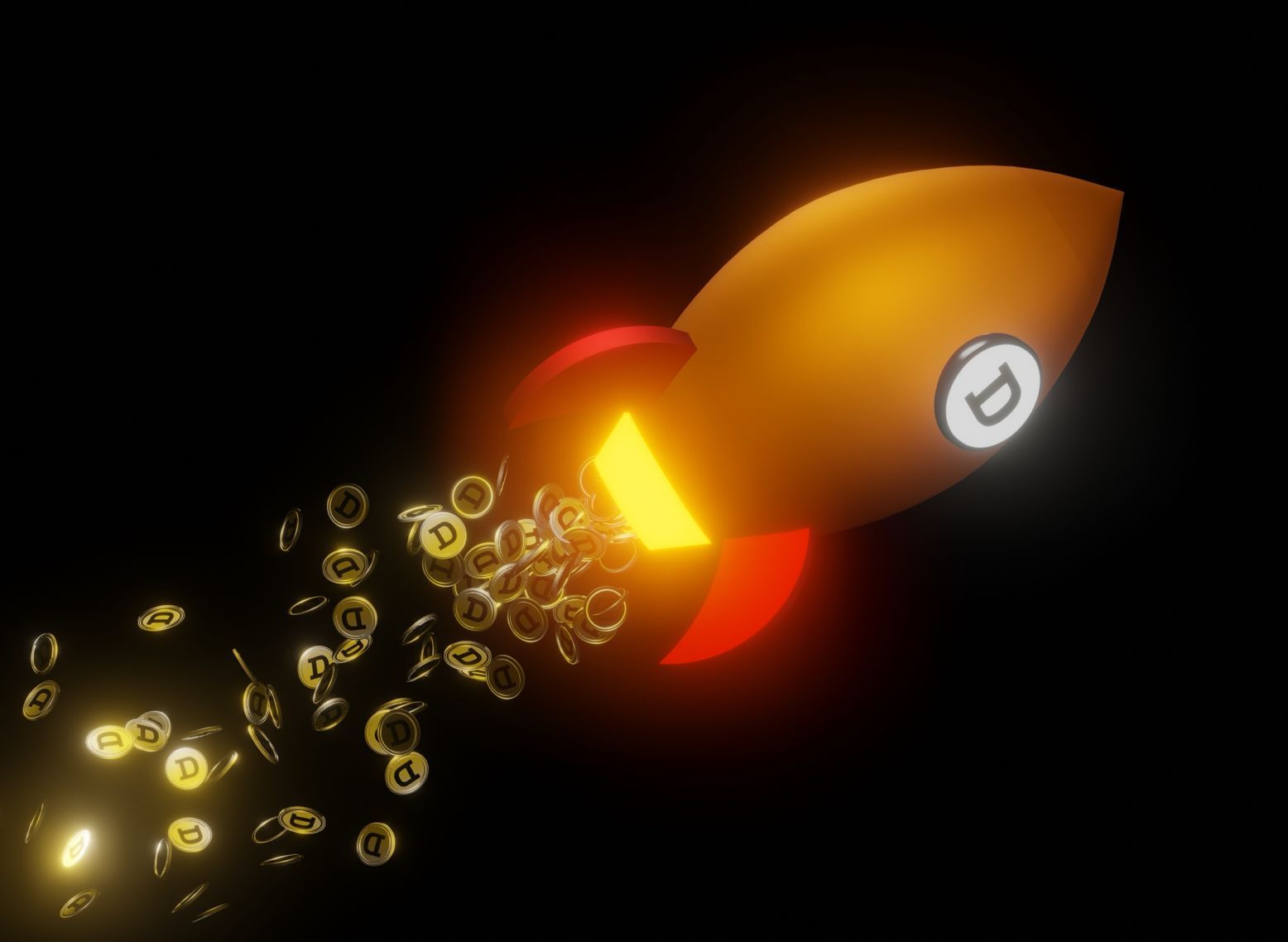
(Adobe)
08 March 2024
Cryptocurrency for interplanetary commerce, Russian nuclear power for the Moon, China outline position on resource extraction - Space News Roundup
There has been much excitement over the rally of popular cryptocurrency, Dogecoin (DOGE). The value has not only soared, but also seemingly sustained, currently holding a value of $0.15 per coin, compared to $0.07 one month ago, representing a rise of roughly 105%. Some analysts now predict that an eventual rise to $1 wouldn’t be surprising.
Speculation over the retail adoption of DOGE could be one of the key drivers, with Ferrari becoming one of the latest major brands to accept the coin as payment, while DOGE is the only cryptocurrency that Tesla accepts as payment. Furthermore, rumours continue to gather surrounding the possibility of it also being somehow incorporated into X.com. Elon Musk is a keen supporter of Dogecoin and back in April he temporarily changed the social media platform’s logo to the Shiba Inu dog image associated with the currency.
While Musk gave no explanation for this, nor has he confirmed in any way that DOGE will be incorporated into X.com, more excitement came last month, surrounding news of the DOGE-1 lunar mission, which consists of a lunar satellite due to be launched with SpaceX. The CubeSat mission, being developed by Geometric Energy Corporation was announced in 2021, and its purpose is to collect "lunar-spatial intelligence" using onboard sensors and a camera, while also displaying display images and digital art on a small screen on the lunar orbiter that will be broadcast back to Earth.
The mission has been entirely funded using Dogecoin and furthermore, SpaceX recently accepted DOGE as a means of payment for a rescheduling the launch of the mission. These all amount to increasing speculation about the role of Dogecoin as a future interplanetary currency. Crypto News said that “the successful transaction using Dogecoin to fund a mission of this magnitude is a milestone” and that it “cements the cryptocurrency’s position as a viable unit of account for lunar and possibly interplanetary business dealings.”
In addition, Tom Ochinero, VP of Commercial Sales for SpaceX, previously said that "this mission (DOGE-1) will demonstrate the application of cryptocurrency beyond Earth orbit and set the foundation for interplanetary commerce.”
Blockchain as the basis for a decentralised space economy?
Blockchain is already being used in the industry, through companies such as Blockstream, Cryptosat and Spacechain. Furthermore, NASA announced last year that they will use Blockchain technology to prove future crewed landings on the Moon, using “data cubes”. The transparent nature of Blockchain has also been touted as beneficial as the basis for a decentralised space economy, as it fosters trust among stakeholders.
Also, using blockchain and cryptocurrencies to build a decentralised finical system could be beneficial in relation to future asteroid mining and off-world resource extraction. Retrieving large quantities of valuable minerals from other celestial bodies could cause the value of these resources to plummet, and therefore have a detrimental effect on those global economies that base their value upon them. It has been suggested that a decentralised system based on Blockchain could therefore theoretically prevent that.
It still remains unclear what the short and long-term applications could truly be, and Elon Musk remains somewhat cryptic on the matter. However, with the advent of missions such as DOGE-1, we may be witnessing the birth of a new application for currencies, such as Dogecoin, for space. The CubeSat mission could be one of the curtain-raising moments for this, and while it was delayed from its scheduled launch last month with Intuitive Machines (IM-1), we could still see it launched possibly with their second mission later this year.
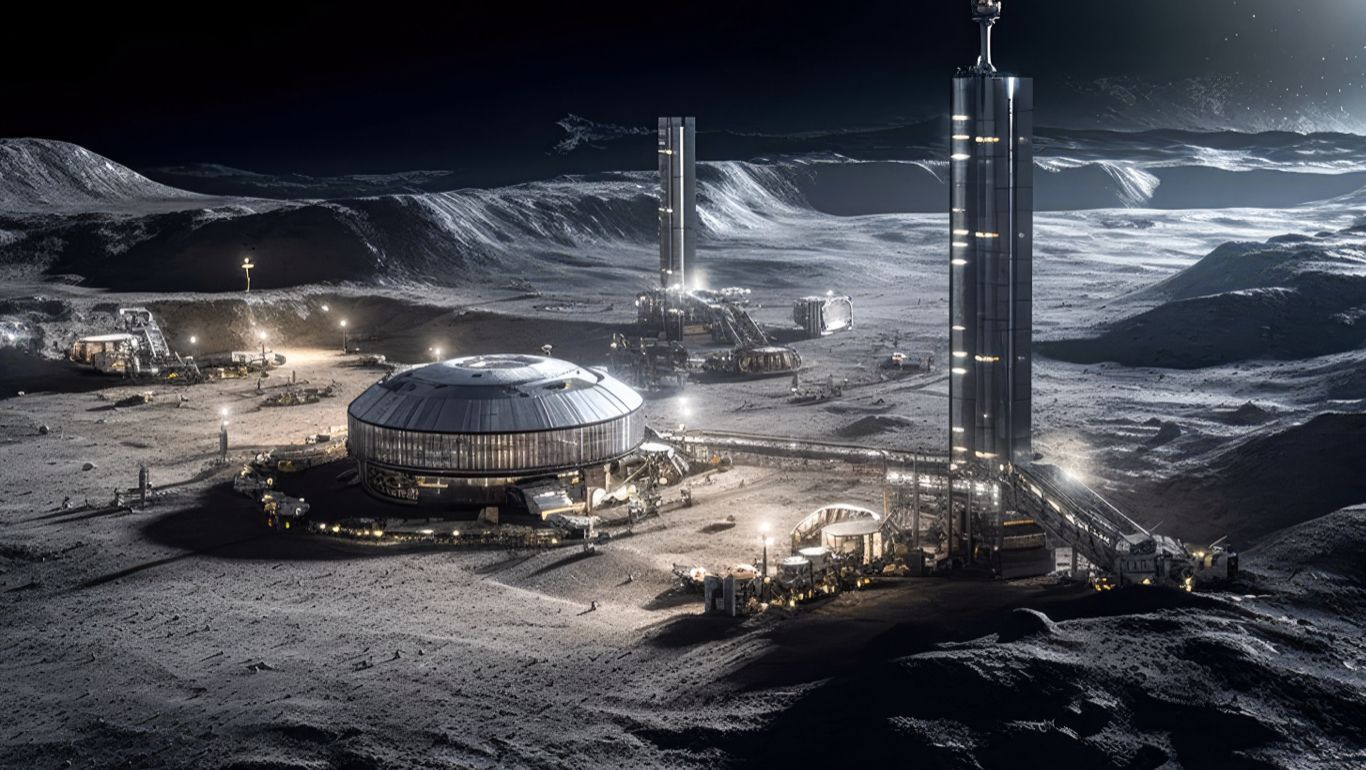
(Adobe)
Russia plan for lunar nuclear power, China to build surveillance on the moon
In the wake of growing national and commercial lunar ambitions, Russia have this week expanded on their future plans for the growing lunar economy. Through the Chinese-led International Lunar research Station (ILRS) project, Roscosmos head, Yuri Borisov, said that Russia will add its expertise and provide a nuclear power plant on the Moon by 2035.
Power solutions such as nuclear hold a clear and distinct advantage over solar power, in being able to seamlessly provide energy throughout the long lunar night. Rolls Royce also recently announced plans to develop a mini nuclear reactor which could be used on the Moon, a project which received UK Space Agency funding.
Speaking at the Moscow State Technical University, Borisov also announced renewed efforts in the space industry for Russia, which has been suffering due to the effect sanctions and loss of international partners. They are now aiming for over 40 space missions this year, increased from 19 in 2023. Borisov is also tasked with drastically increasing Russia’s satellite manufacturing capacity from 40 to 250 annually.
Russia is still a leading space nation with a fine industrial heritage. However, they are now under mounting pressure to build and maintain their leadership, in the wake of geopolitical pressures and rising competition from emerging space powers such as India.
China build on lunar ambitions and launch capacity
China is also building on its launch capacity with plans for the development of reusable launch vehicles. Reusability is already being tested with commercial startups such as Galactic Energy and Landspace.
However, China’s main state contractor, China Aerospace Science and Technology Corporation (CASC), is exploring plans for reusability, with both a four and five metre-diameter rocket slated for launch in 2025 and 2026, respectively. Although the details surrounding the two vehicles aren’t yet clear, CASC is known to be developing a new five metre-diameter Long March 10 rocket, capable of launching crew to orbit, with a three-core version able to carry a crew vehicle to lunar orbit.
China has clear ambitions regarding lunar exploration, with their Chang’e-6 lander mission due to launch in May this year, building towards towards plans for a permanent lunar base and a crewed landing by 2030.
They have also this week detailed plans to construct a permanent camera surveillance network, which would enable a seamless view off their lunar research station area. According to a paper published by the Lunar Exploration and Space Engineering Centre of the China National Space Administration (CNSA), they would be able to draw on experience from their domestic surveillance network, named project Skynet, which mobilises the use of 600 million cameras in the country.
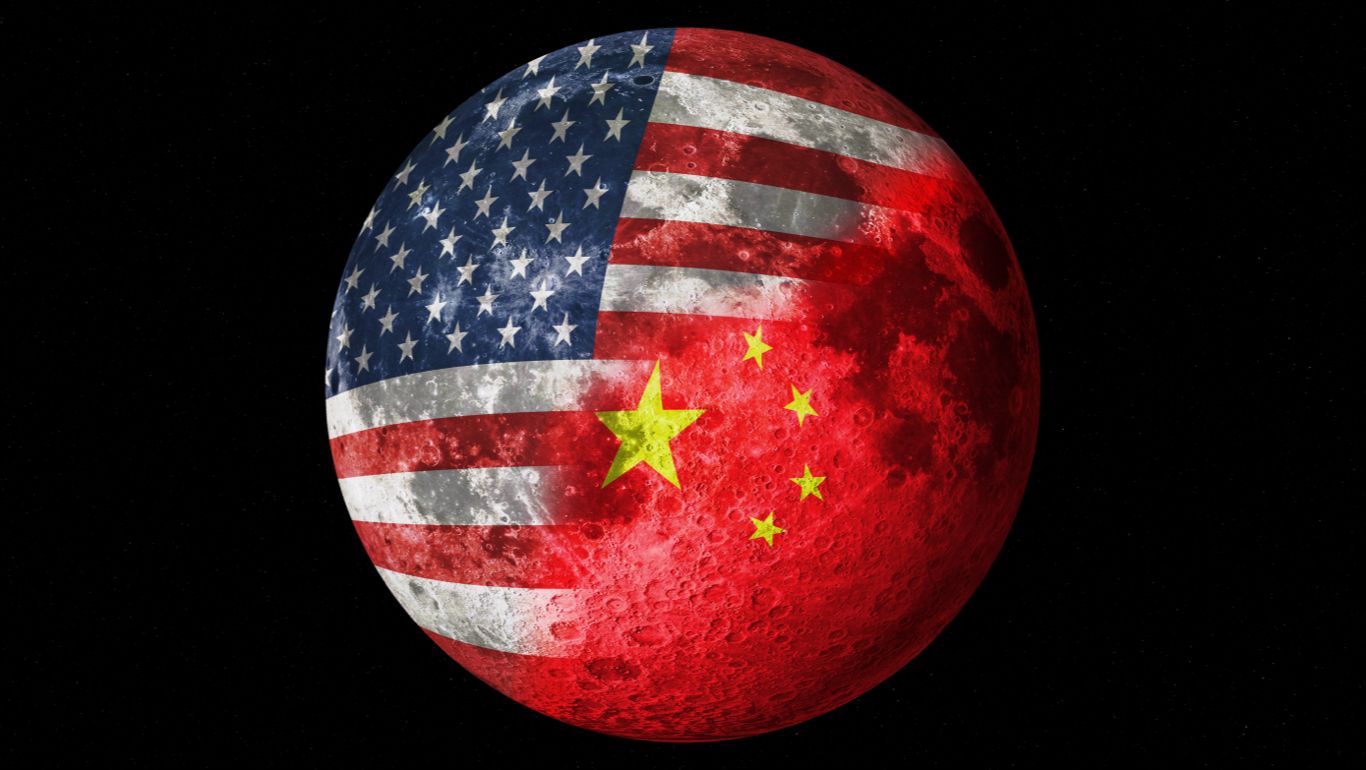
(Adobe)
China outline position on space resource extraction to UN
In what became an eventful week regarding development of lunar infrastructure, China also outlined its position on the use and extraction of off-world resources, such as on the Moon.
The US have made their position on this somewhat clear already, through the regulatory framework, the Artemis Accords. This permits lunar mining while also maintaining that it is based on the principles of the UN Outer Space Treaty (OST).
A document was submitted by China to the Working Group on Legal Aspects of Space Resource Activities of the Legal Subcommittee of the Committee on the Peaceful Uses of Outer Space (COPUOS), within which it states that China believes that “the exploration, exploitation and utilisation of space resources shall be in conformity with the principle of non-appropriation.” Article II of the OST forbids the appropriation of territory, and so it seems that China are also willing to comply with the UN law, while also permitting resource utilisation, much in the way the Artemis Accords does.
The move by China is also encouraging in that it shows their willingness to approach the UN and use it as a meeting place to discuss these pressing matters. Meanwhile, in adopting a similar stance to the US, it would seem that there is some possibility of establishing a form of universal regulatory alignment.
China proposal not completely in alignment with US approach
However, while this move has been seen as encouraging, it still does not address some fundamental problems. While both approaches claim to be based upon the principles of UN space law, the OST itself does not actually set clear rules regarding resource extraction, nor is it suitable to govern for the commercial age, being written in 1967. This would still make it much more difficult to establish any kind of sustainable legal transparency or resolve disputes.
Furthermore, even if the US and China could establish regularity alignment on resource utilisation, it still doesn’t necessarily prevent the growth of a new race mentality, which has been gaining significant momentum in the previous year. For example, a US subcommittee of the House Natural Resources Committee discussed the topic of lunar mining in December, with Michelle Hanlon, executive director of the University of Mississippi, arguing for the use of “exclusion zones” (a safety zone marked around the area around a landed vehicle) in order to secure resource-rich areas.
The Chinese paper also addresses concerns about commercial activity interrupting any scientific exploration, stating that “the Working Group should consider…any potential negative impact of those concerning commercial space resource activities on such activities with a scientific investigation purpose.”
It also proposes taking measures to “prevent depletive exploitation of space resources”, something which could possibly occur through increased commercial activity and competition. This doesn’t necessarily align with the US-led approach, with the Artemis Accords encouraging commercial partnerships as a catalyst for economic growth.
This proves that issues do remain, and a truly universal regulatory handbook does not yet exist, but at least China’s move may at least suggest that dialogue can be opened-up.
Share this article
08 March 2024
Cryptocurrency for interplanetary commerce, Russian nuclear power for the Moon, China outline position on resource extraction - Space News Roundup
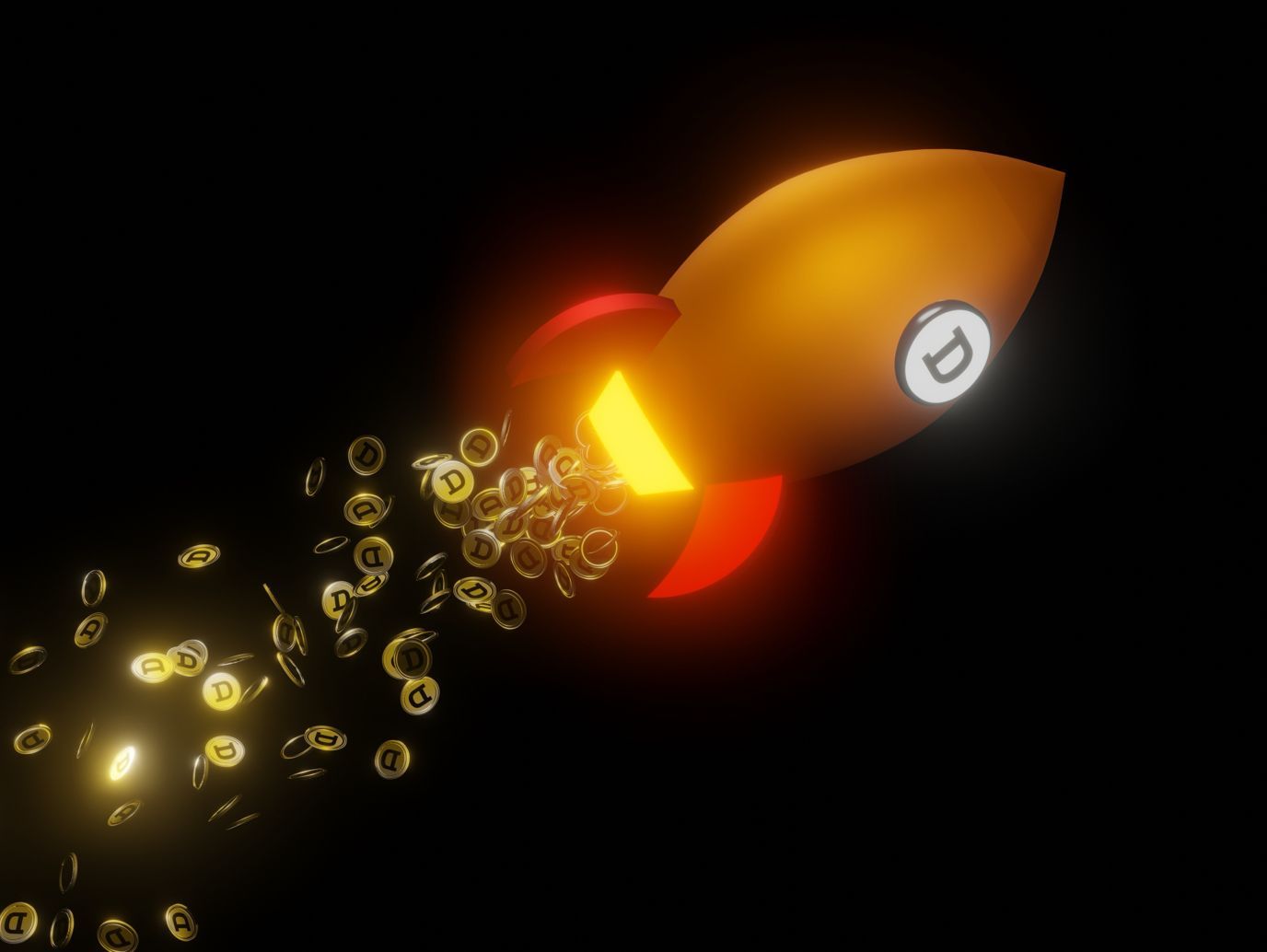
(Adobe)
There has been much excitement over the rally of popular cryptocurrency, Dogecoin (DOGE). The value has not only soared, but also seemingly sustained, currently holding a value of $0.15 per coin, compared to $0.07 one month ago, representing a rise of roughly 105%. Some analysts now predict that an eventual rise to $1 wouldn’t be surprising.
Speculation over the retail adoption of DOGE could be one of the key drivers, with Ferrari becoming one of the latest major brands to accept the coin as payment, while DOGE is the only cryptocurrency that Tesla accepts as payment. Furthermore, rumours continue to gather surrounding the possibility of it also being somehow incorporated into X.com. Elon Musk is a keen supporter of Dogecoin and back in April he temporarily changed the social media platform’s logo to the Shiba Inu dog image associated with the currency.
While Musk gave no explanation for this, nor has he confirmed in any way that DOGE will be incorporated into X.com, more excitement came last month, surrounding news of the DOGE-1 lunar mission, which consists of a lunar satellite due to be launched with SpaceX. The CubeSat mission, being developed by Geometric Energy Corporation was announced in 2021, and its purpose is to collect "lunar-spatial intelligence" using onboard sensors and a camera, while also displaying display images and digital art on a small screen on the lunar orbiter that will be broadcast back to Earth.
The mission has been entirely funded using Dogecoin and furthermore, SpaceX recently accepted DOGE as a means of payment for a rescheduling the launch of the mission. These all amount to increasing speculation about the role of Dogecoin as a future interplanetary currency. Crypto News said that “the successful transaction using Dogecoin to fund a mission of this magnitude is a milestone” and that it “cements the cryptocurrency’s position as a viable unit of account for lunar and possibly interplanetary business dealings.”
In addition, Tom Ochinero, VP of Commercial Sales for SpaceX, previously said that "this mission (DOGE-1) will demonstrate the application of cryptocurrency beyond Earth orbit and set the foundation for interplanetary commerce.”
Blockchain as the basis for a decentralised space economy?
Blockchain is already being used in the industry, through companies such as Blockstream, Cryptosat and Spacechain. Furthermore, NASA announced last year that they will use Blockchain technology to prove future crewed landings on the Moon, using “data cubes”. The transparent nature of Blockchain has also been touted as beneficial as the basis for a decentralised space economy, as it fosters trust among stakeholders.
Also, using blockchain and cryptocurrencies to build a decentralised finical system could be beneficial in relation to future asteroid mining and off-world resource extraction. Retrieving large quantities of valuable minerals from other celestial bodies could cause the value of these resources to plummet, and therefore have a detrimental effect on those global economies that base their value upon them. It has been suggested that a decentralised system based on Blockchain could therefore theoretically prevent that.
It still remains unclear what the short and long-term applications could truly be, and Elon Musk remains somewhat cryptic on the matter. However, with the advent of missions such as DOGE-1, we may be witnessing the birth of a new application for currencies, such as Dogecoin, for space. The CubeSat mission could be one of the curtain-raising moments for this, and while it was delayed from its scheduled launch last month with Intuitive Machines (IM-1), we could still see it launched possibly with their second mission later this year.
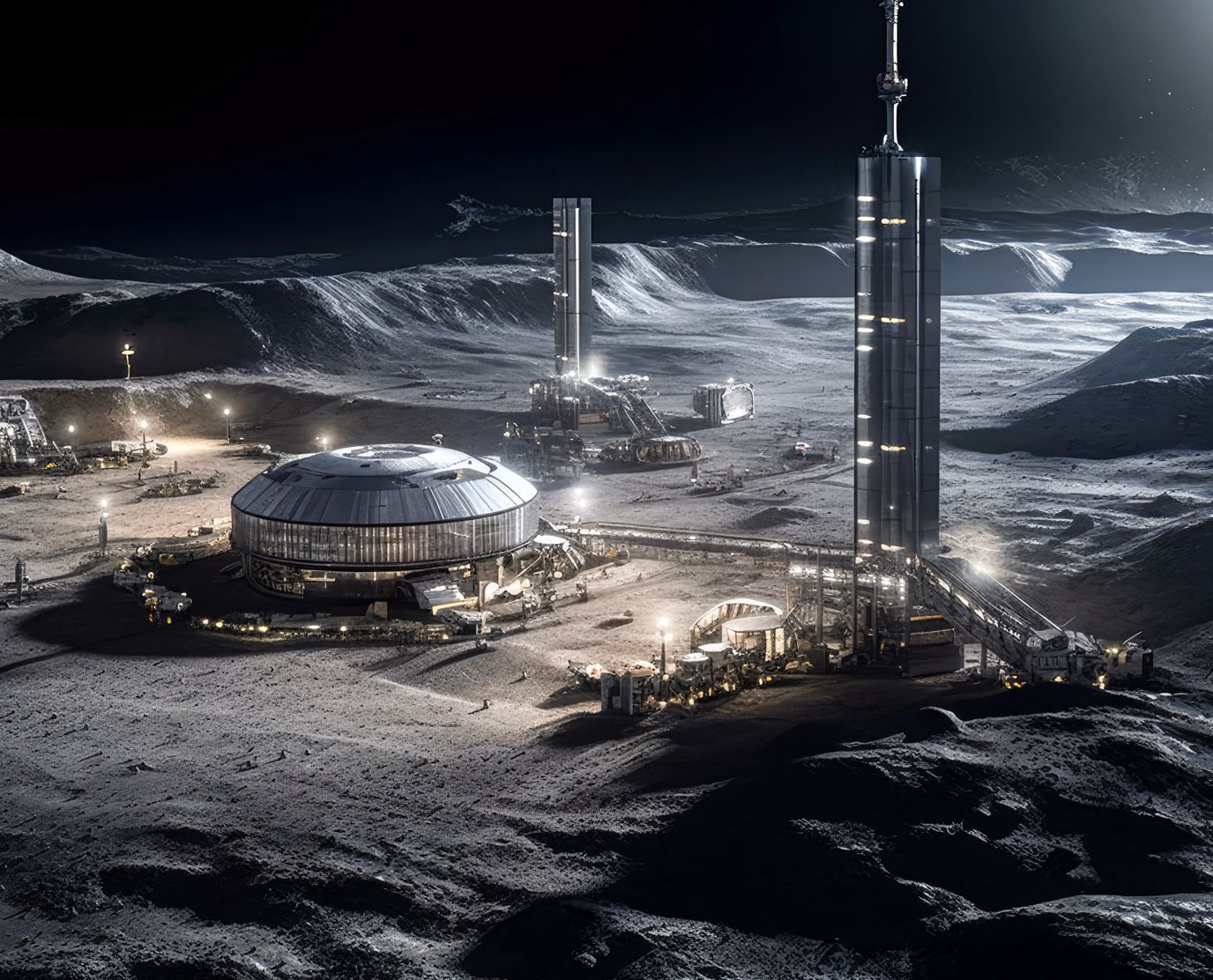
(Adobe)
Russia plan for lunar nuclear power, China to build surveillance on the moon
In the wake of growing national and commercial lunar ambitions, Russia have this week expanded on their future plans for the growing lunar economy. Through the Chinese-led International Lunar research Station (ILRS) project, Roscosmos head, Yuri Borisov, said that Russia will add its expertise and provide a nuclear power plant on the Moon by 2035.
Power solutions such as nuclear hold a clear and distinct advantage over solar power, in being able to seamlessly provide energy throughout the long lunar night. Rolls Royce also recently announced plans to develop a mini nuclear reactor which could be used on the Moon, a project which received UK Space Agency funding.
Speaking at the Moscow State Technical University, Borisov also announced renewed efforts in the space industry for Russia, which has been suffering due to the effect sanctions and loss of international partners. They are now aiming for over 40 space missions this year, increased from 19 in 2023. Borisov is also tasked with drastically increasing Russia’s satellite manufacturing capacity from 40 to 250 annually.
Russia is still a leading space nation with a fine industrial heritage. However, they are now under mounting pressure to build and maintain their leadership, in the wake of geopolitical pressures and rising competition from emerging space powers such as India.
China build on lunar ambitions and launch capacity
China is also building on its launch capacity with plans for the development of reusable launch vehicles. Reusability is already being tested with commercial startups such as Galactic Energy and Landspace.
However, China’s main state contractor, China Aerospace Science and Technology Corporation (CASC), is exploring plans for reusability, with both a four and five metre-diameter rocket slated for launch in 2025 and 2026, respectively. Although the details surrounding the two vehicles aren’t yet clear, CASC is known to be developing a new five metre-diameter Long March 10 rocket, capable of launching crew to orbit, with a three-core version able to carry a crew vehicle to lunar orbit.
China has clear ambitions regarding lunar exploration, with their Chang’e-6 lander mission due to launch in May this year, building towards towards plans for a permanent lunar base and a crewed landing by 2030.
They have also this week detailed plans to construct a permanent camera surveillance network, which would enable a seamless view off their lunar research station area. According to a paper published by the Lunar Exploration and Space Engineering Centre of the China National Space Administration (CNSA), they would be able to draw on experience from their domestic surveillance network, named project Skynet, which mobilises the use of 600 million cameras in the country.
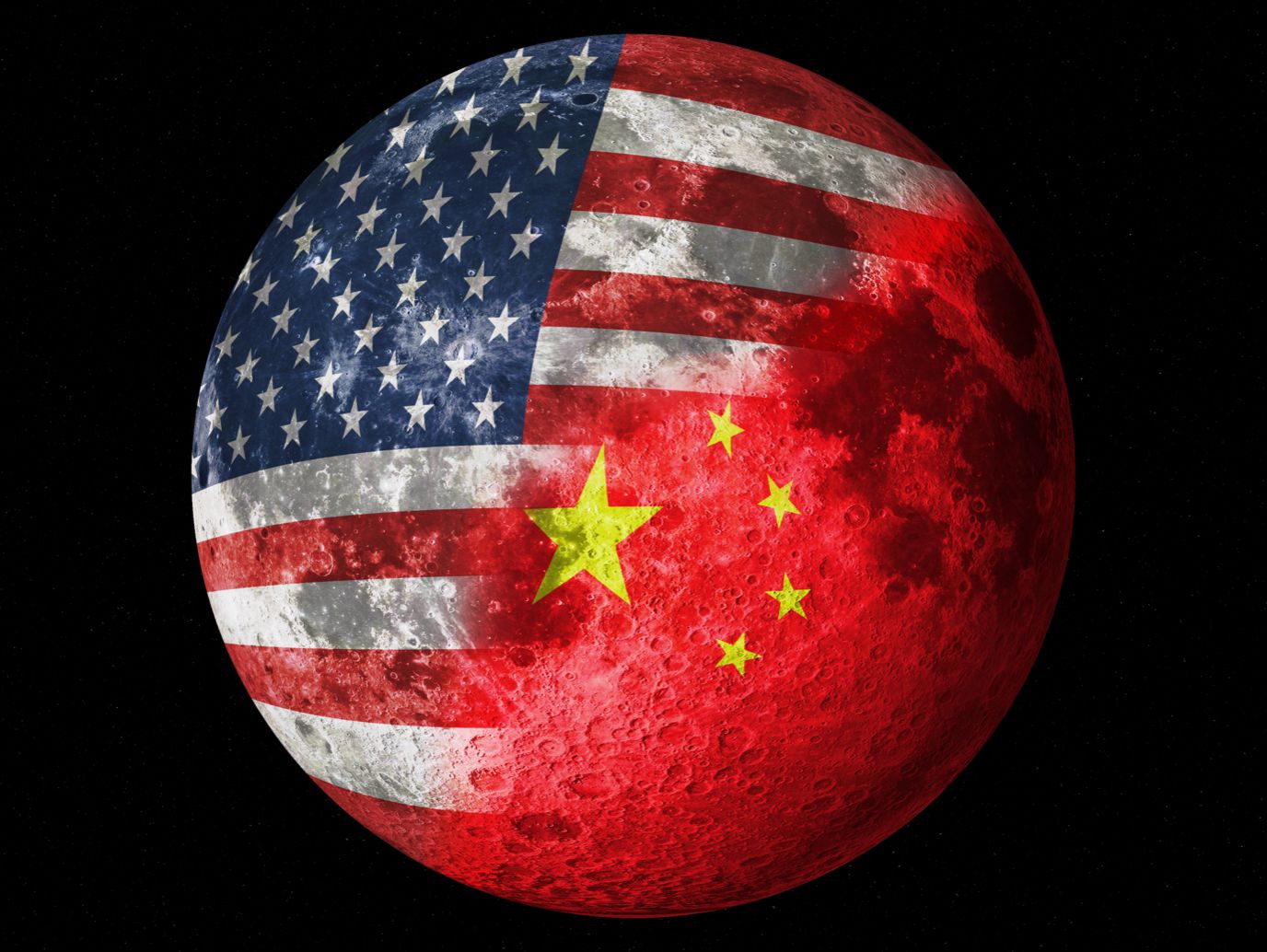
(Adobe)
China outline position on space resource extraction to UN
In what became an eventful week regarding development of lunar infrastructure, China also outlined its position on the use and extraction of off-world resources, such as on the Moon.
The US have made their position on this somewhat clear already, through the regulatory framework, the Artemis Accords. This permits lunar mining while also maintaining that it is based on the principles of the UN Outer Space Treaty (OST).
A document was submitted by China to the Working Group on Legal Aspects of Space Resource Activities of the Legal Subcommittee of the Committee on the Peaceful Uses of Outer Space (COPUOS), within which it states that China believes that “the exploration, exploitation and utilisation of space resources shall be in conformity with the principle of non-appropriation.” Article II of the OST forbids the appropriation of territory, and so it seems that China are also willing to comply with the UN law, while also permitting resource utilisation, much in the way the Artemis Accords does.
The move by China is also encouraging in that it shows their willingness to approach the UN and use it as a meeting place to discuss these pressing matters. Meanwhile, in adopting a similar stance to the US, it would seem that there is some possibility of establishing a form of universal regulatory alignment.
China proposal not completely in alignment with US approach
However, while this move has been seen as encouraging, it still does not address some fundamental problems. While both approaches claim to be based upon the principles of UN space law, the OST itself does not actually set clear rules regarding resource extraction, nor is it suitable to govern for the commercial age, being written in 1967. This would still make it much more difficult to establish any kind of sustainable legal transparency or resolve disputes.
Furthermore, even if the US and China could establish regularity alignment on resource utilisation, it still doesn’t necessarily prevent the growth of a new race mentality, which has been gaining significant momentum in the previous year. For example, a US subcommittee of the House Natural Resources Committee discussed the topic of lunar mining in December, with Michelle Hanlon, executive director of the University of Mississippi, arguing for the use of “exclusion zones” (a safety zone marked around the area around a landed vehicle) in order to secure resource-rich areas.
The Chinese paper also addresses concerns about commercial activity interrupting any scientific exploration, stating that “the Working Group should consider…any potential negative impact of those concerning commercial space resource activities on such activities with a scientific investigation purpose.”
It also proposes taking measures to “prevent depletive exploitation of space resources”, something which could possibly occur through increased commercial activity and competition. This doesn’t necessarily align with the US-led approach, with the Artemis Accords encouraging commercial partnerships as a catalyst for economic growth.
This proves that issues do remain, and a truly universal regulatory handbook does not yet exist, but at least China’s move may at least suggest that dialogue can be opened-up.
Share this article
External Links
This Week
News articles posted here are not property of ANASDA GmbH and belong to their respected owners. Postings here are external links only.








